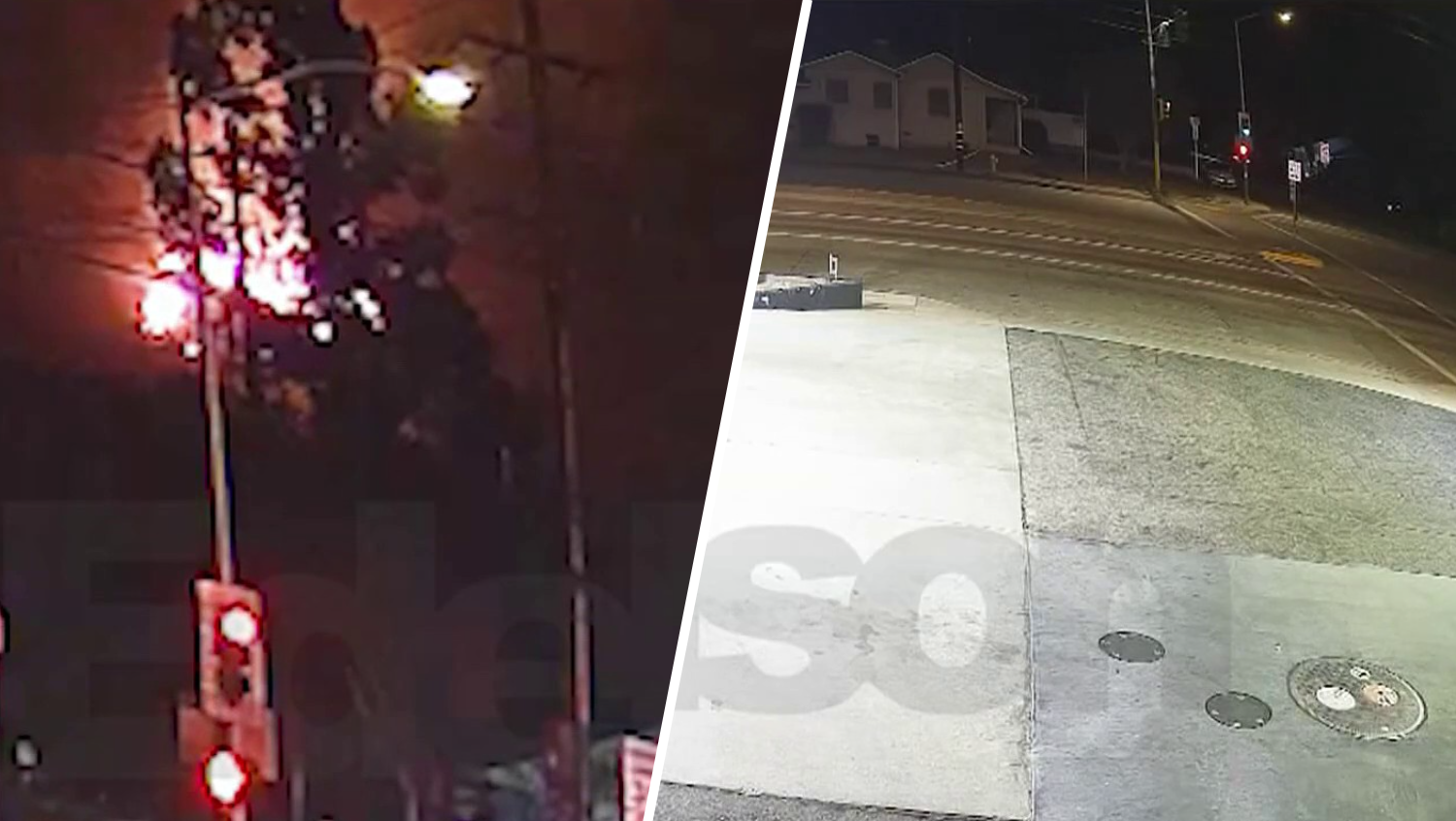Our Investigative Unit has obtained new cell phone video that captures the early moments of the Eaton Canyon fire. Jaxon Van Derbeken joins Jessica Aguirre and takes a closer look.
Southern California Edison told state regulators Thursday that it's investigating whether a line it had previously shut off may have played a role in sparking the Eaton Fire above Altadena.
Video, obtained by NBC Bay Area, shows the fire burning at the base of a tower Edison had previously deactivated. The tower is at one end of Edison’s now defunct Mesa-Sylmar system that spans the Angeles National Forest. That idled tower is dwarfed by two larger transmission towers that each transmit 222,000 volts of electricity across vast areas.
“SCE is evaluating a number of potential causes, including whether the idle Mesa-Sylmar transmission line could have become energized,” the utility told the California Public Utilities Commission.
The fire started at about 6:11 p.m. on Jan. 7. An expert says the phone video, obtained by NBC Bay Area from a source who declined to be identified publicly, provides some evidence to support a theory that the dead power system may have played a role.
The footage was recorded at 6:14 p.m. The footage was taken from different position than most other videos of the first moments of the fire, and it appears to show flames directly below the decommissioned tower.
“One would not expect a non-energized line to come to life,” said electrical engineer Ken Buske, who’s investigated more than 1,000 fires.
But Buske explained that it was possible for that to happen, even under normal circumstances, and especially in high winds. That’s because dead electrical lines easily take on power from nearby live transmission lines, by way of a phenomenon called induction. The closer the live and dead lines are, the more energy is transferred.
He said any inducted electricity into the dead Mesa-Sylmar lines wouldn’t normally be a problem, as long as the line was properly grounded on the tower at the end. But as with any faulty grounding connection, heat can build up, and that could send sparks down to the surrounding brush.
“The induced current can cause arcing through a bad connection, so you can have arcing that causes a fire if the grounding isn’t proper even though the line’s dead,” Buske said.
Get a weekly recap of the latest San Francisco Bay Area housing news. Sign up for NBC Bay Area’s Housing Deconstructed newsletter.
Edison acknowledged that possibility in its Thursday filing, saying it was exploring the induction scenario and whether “that line or its grounding could be related to the cause of the fire.”
SCE said in the regulatory filing that it inspected the Mesa-Sylmar line each year between 2020 and 2024 and found that nothing out of the ordinary. It also said it reviewed photographs before and after the fire and found no “obvious” signs of sparking or arcing. But it did find signs of arcing damage at the other end of the defunct Mesa-Sylmar line, some five miles from the origin of the fire.
Edison also revealed that it spotted a flash at the tower on the same defunct line – not at the time the fire started – but when it turned the power back to the nearby transmission lines days after the fire. It has since turned all those lines off as a precaution.
It also said it was separately “investigating human activity near the County’s preliminary area of origin.”
SCE said last month that it had not detected faults or anomalies on its high-voltage transmission lines in Eaton Canyon for the 12 hours prior to the ignition of the Eaton Fire. In its new filing, however, it detailed parts of its network in the area that shutdown due to power fluctuations at the time the fire broke out, at 6:11 p.m.
The company is facing dozens of lawsuits from fire victims that allege Edison and its equipment should be held liable for causing the fire.




